What is asbestos?
Asbestos is the name given to a group of naturally occurring minerals that are resistant to heat and corrosion. Asbestos has been used in products, such as insulation for pipes (steam lines for example), floor tiles, building materials, and in vehicle brakes and clutches. Asbestos includes the mineral fibers chrysotile, amosite, crocidolite, tremolite, anthophyllite, actinolite and any of these materials that have been chemically treated or altered. Heavy exposures tend to occur in the construction industry and in ship repair, particularly during the removal of asbestos materials due to renovation, repairs, or demolition. Workers are also likely to be exposed during the manufacture of asbestos products (such as textiles, friction products, insulation, and other building materials) and during automotive brake and clutch repair work.
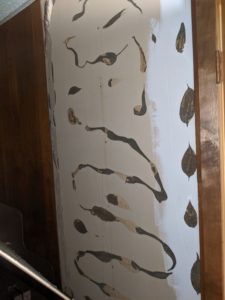
Wood panel and construction glue
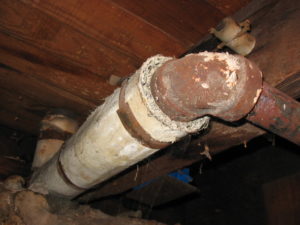
Pipe insulation
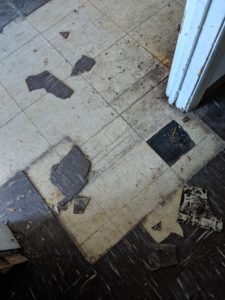
Floor tile
What kinds of materials can contain asbestos?
Any type of building, commercial or residential may contain asbestos building products. There is no magic year after which asbestos materials won’t be found in a building. EPS has been involved in projects with buildings built after 2000.
Some common materials that may contain asbestos include roofing, plaster, drywall, drywall mud, ceiling or wall texture, linoleum or floor tiles, siding, thermal insulation, attic insulation, wall and wood panel glues, vermiculite in walls and many others. Even cement, ceramic tile, grout, caulk and glazing on windows may contain asbestos.
The only way to tell is to have a sample analyzed by a laboratory. Currently the Iowa DNR requires that any demolition or renovation projects have a survey completed with sample analysis prior to any work to determine what materials are asbestos and to make sure the asbestos is handled properly.
The regulations do not apply to homeowners if they are doing their own work, but if they hire a contractor then some regulations would apply. EPS will be glad to help homeowners if they want some suspect materials tested or removed.
List of Common Suspect Asbestos Materials
- This list is not complete.
- Please call with questions.
- Floor tile and mastic
- Linoleum
- House siding
- Pipe or boiler insulation
- Thermal duct wrap
- Attic insulation
- Wall and ceiling insulation
- Plaster walls or ceilings
- Drywall and joint compound
- Texture on drywall or plaster
- Wall and panel glues
- Vermiculite in walls etc.
- Roof materials, tar and flashings
- Window glazing and caulk
- Wall and brick caulks etc.
- Fireproofing
- Cement asbestos board
- Ceramic tile and grout
- Ceiling tiles and glues
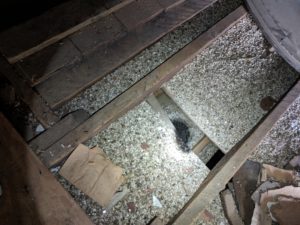
Attic insulation
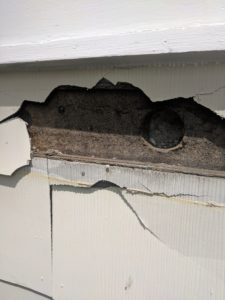
House siding
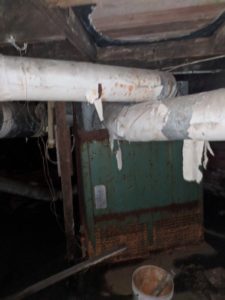
House duct wrap
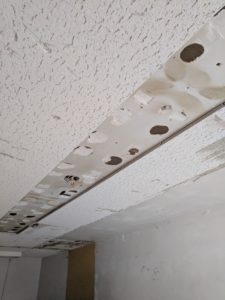
Ceiling tile, glue and drywall
What are the hazards of asbestos?
Asbestos is well recognized as a health hazard and its use is now highly regulated by both OSHA and EPA. Asbestos fibers associated with these health risks are too small to be seen with the naked eye. Breathing asbestos fibers can cause a buildup of scar-like tissue in the lungs called asbestosis and result in loss of lung function that often progresses to disability and death. Asbestos also causes cancer of the lung and other diseases such as mesothelioma of the pleura which is a fatal malignant tumor of the membrane lining the cavity of the lung or stomach. Epidemiologic evidence has increasingly shown that all asbestos fiber types, including the most commonly used form of asbestos, chrysotile, causes mesothelioma in humans.
